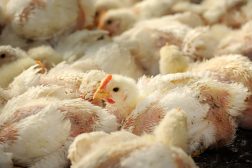Table of Contents
Definition
noun
plural: polyols
pol•y•ol, ˈpɒlɪɒl
A polyhydric alcohol, i.e. an alcohol containing three or more hydroxyl groups
Details
Overview
A polyol is an alcohol characterized by the presence of three or more hydroxyl groups (thus, the name). The term “poly” means multiple and –“ol” refers to alcohol.
Structure/Characteristics
Polyols are organic compounds. An organic compound is a compound that, in general, contains carbon covalently bound to other atoms, especially Carbon-Carbon and Carbon-Hydrogen. A class of polyols called sugar alcohols includes those that are derived from sugars. They may occur naturally or produced industrially. For instance, they may be produced by the hydrogenation of sugars. However, they are not true sugars. Sugars are monosaccharides and disaccharides that have a general chemical formula of Cn (H2O) n, where n may range from 3 to 7. Sugar alcohols are structurally similar to sugars but they have additional hydroxyl groups. Their general formula is (CHOH)nH2. They are also similar to sugars in a way that they, too, may act as an energy source. They are less sweet than sugars.
Biological reaction
Biological reaction
The polyol pathway is a biological process wherein glucose is converted into fructose. It is called polyol because glucose is first reduced to a polyol sorbitol. Sorbitol is then oxidized to fructose. The reduction of glucose to sorbitol is catalyzed by the enzyme aldose reductase whereas the oxidation of sorbitol to fructose is catalyzed by the enzyme sorbitol dehydrogenase. The pathway makes use of cofactors, NADPH and NAD+.
This pathway is implicated in type-II diabetes complications, such as microvascular damage to insulin-independent cells of kidney, retina, and nerves.1 Glucose that has not been phosphorylated by the enzyme hexokinase for glycolytic pathway enters the polyol pathway to be converted into fructose. When there is a large amount of excess glucose, such as in diabetic conditions, the hexokinase becomes saturated with the overwhelming amount of glucose, and consequently, glucose is reduced to sorbitol by aldose reductase instead. Since more NADPH and NAD+ are used in the polyol pathway, they become less available for other important metabolic activities, e.g. glutathione and nitric oxide production. It also leads to increased reactive oxygen species, which can be damaging to cells.
Biological importance
One of the biological functions of polyols is to act as an energy source. Another is its involvement in certain metabolic pathways, such as sorbitol in polyol pathway. In polyol pathway, unused glucose may be converted into fructose, which in turn may be used in certain metabolic activities such as fructolysis, glycation, etc.
Natural polyols, e.g. the sugar alcohol sorbitol, occur in many fruits of plants, such as peaches, apples, pears, berries, and prunes.2 Another sugar alcohol ribitol occurs in bacterial cell wall. In higher animals, some polyols act as osmolytes (i.e. compounds that protect from desiccation by maintaining high intracellular osmolality) in the kidney cells; others serve as antifreeze molecules.3
Sugar alcohols are also produced artificially from sugars and starch. They are used as food additives or sugar alternatives. Food labeled with no sugar or low calorie contains sugar alcohols in place of sugars. Sugar alcohols (with the exception of erythritol) provide about 2.4 kilocalories per gram.2 They are not considered as an essential nutrient — meaning that even without them the individual remains healthy. However, integrating sugar alcohols in the diet may help the diabetics in managing blood glucose levels. Sugar alcohols may be used in place of sucrose (referred to as table sugar). Sucrose is a natural sugar produced especially by the plants, sugarcanes and beets. Sucrose is extracted from these plants and then processed as commercial sugar that is used in various food preparations. Sucrose is an essential carbohydrate since it provides both glucose and fructose that are absorbed and fully metabolized by the body. However, they have high glycemic index (GI) than sugar alcohols. Glucose has a GI of 100 and fructose has 25. Sucrose has a GI of 65. Sugar alcohols have a GI <10.2 A high glycemic index means that it can raise blood glucose levels. A consistently high blood glucose level is implicated in diabetes mellitus and obesity. Apart from having a lower GI, sugar alcohols also give the advantage of not promoting tooth decay. They are not usually fermented or metabolized by oral bacteria, and therefore are not converted into acids or other byproducts that contribute to tooth decay. They are used in the production of toothpastes, lozenges, and medicinal syrups. They are poorly digestible, though. Thus, they could be fermented by the gut bacteria when they reach the colon. This could lead to diarrhea, flatulence, and abdominal bloating in healthy individuals that ingested large amounts (>20 g) or in sensitive individuals that ingested even a small amount.
Examples of polyols
Examples of sugar alcohols (a class of polyols) are as follows: sorbitol, maltitol, xylitol, erythritol, isomalt, glycerol, lactitol, mannitol, and hydrogenated starch hydrolysates. Sorbitol, for instance, is one of the most common type of polyol. It occurs naturally in some plants, e.g. prunes, apples, pears, and berries. It is also produced artificially for use in the industry. It is often used in the manufacture of foods labeled as sugar-free or diet (e.g. drinks, ice cream, mints, chewing gum, etc.). Another commonly used sugar alcohol as sugar alternative is maltitol. It is used in manufacturing sugar-free candy, ice cream, chewing gum, chocolates, and baked goods. Isomalt is a disaccharide polyol from sucrose. it has also been used in candies and other sweets labeled as sugar-free.
Supplementary
Etymology
- poly (meaning “multiple”) + -ol (referring to alcohol)
Also called
Derived term(s)
- polyol pathway
Further reading
See also
- fructose
- sugar
- sugar alcohol
- sorbitol
- isomaltulose
Reference
- Jedziniak, J. A., Chylack, L.T., Cheng, H.M., Gillis, M.K., Kalustian, A.A., & Tung, W.H. (1981). “The sorbitol pathway in the human lens: aldose reductase and polyol dehydrogenase”. Investigative Ophthalmology & Visual Science, 20 (3): 314–26.
- Sugar Alcohol: Definition, Side Effects, Use in Diabetes, IBS. (2016, June 4). Retrieved from ://www.nutrientsreview.com/carbs/low-calorie-sugar-alcohols-polyols.html Link
- “polyol.” A Dictionary of Biology. Retrieved from ://www.encyclopedia.com/science/dictionaries-thesauruses-pictures-and-press-releases/polyol Link
© Biology Online. Content provided and moderated by Biology Online Editors







